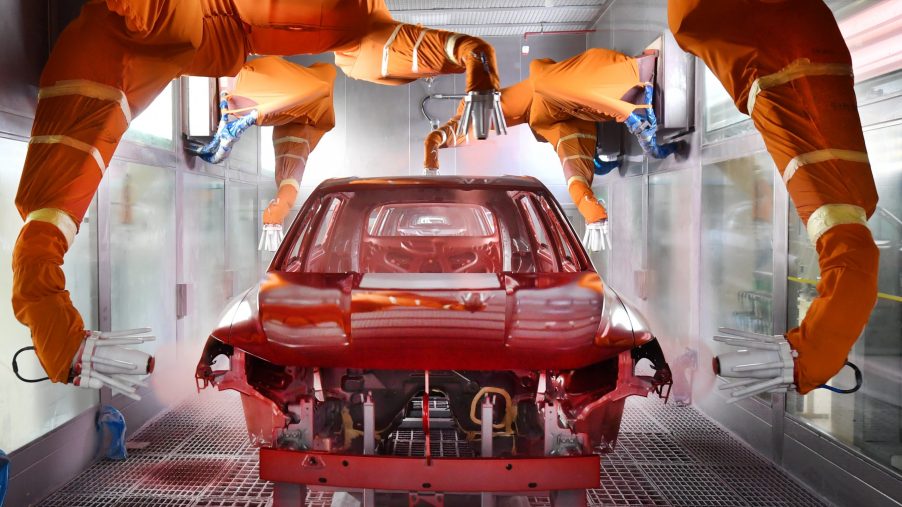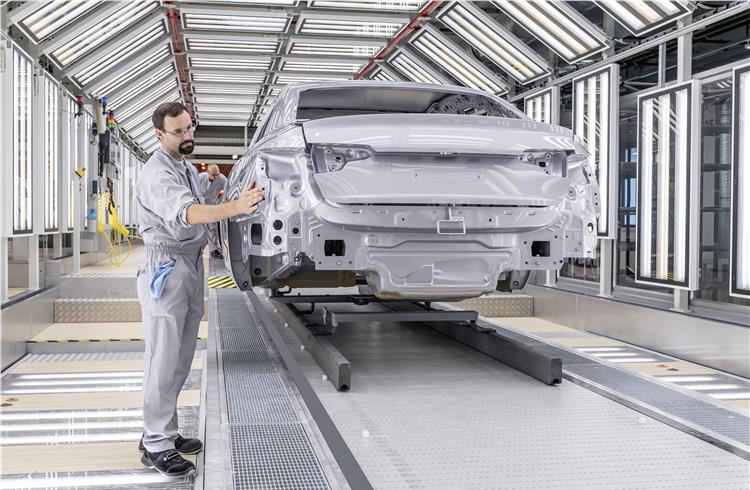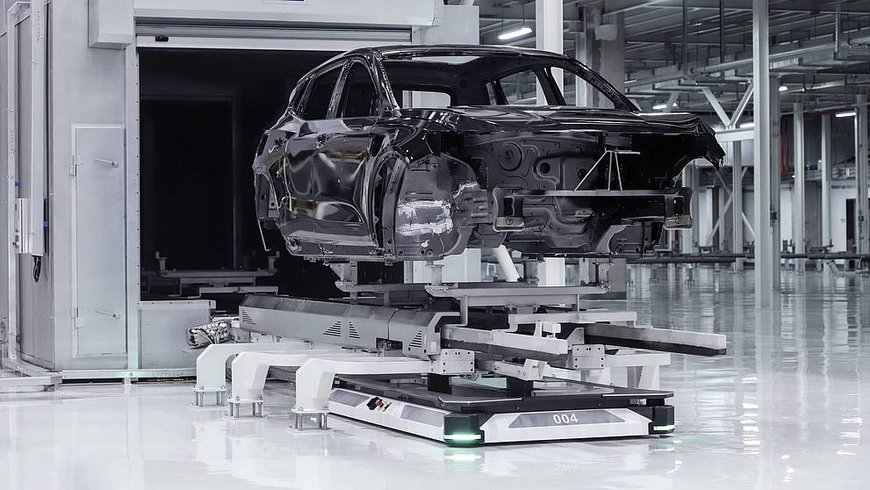In the world of car manufacturing, ensuring a flawless paint job is paramount. Manufacturers know that the appearance of a vehicle is a major selling point. Unfortunately, paint defects can occur, disturbing the sheen and aesthetics of newly manufactured cars. This article delves into how today’s technology is employed in car manufacturing to eliminate paint defects.

Importance of a Flawless Finish
A vehicles paint job is one of the first things noticed by potential buyers. Any imperfections can significantly diminish the perception of quality. Therefore, eliminating paint defects in car manufacturing is crucial.
Common Paint Defects in Car Manufacturing
- Orange Peel
- Fish Eyes
- Runs and Sags
- Crater Defects
- Color Mismatches
Orange Peel
Orange peel resembles the texture of an oranges skin. Its caused by improper painting techniques or issues within the paint mixture. Manufacturers employ automated sprayers and advanced techniques to ensure uniformity and smoothness.
Fish Eyes
Fish eyes appear as small, circular craters and are generally caused by contamination. To combat this, manufacturers invest in quality cleaning and preparation processes before the application of paint. Additionally, they use specialized filters and controlled environments to minimize contaminants.
Runs and Sags
Runs and sags happen due to excessive paint application. This defect is usually encountered when the applicators movement is too slow or when the paint mixture is too thin. Sensors and automated systems now ensure consistent application by monitoring the flow and pressure of paint.
Crater Defects
Crater defects, often resulting from inadequate surface preparation, appear as tiny, crater-like holes. Modern car manufacturing facilities use advanced techniques like plasma cleaning to prepare surfaces meticulously before painting.
Color Mismatches
Color mismatches occur when there is an inconsistency in the paint mixture or application process. Automated color matching systems are now widely employed, guaranteeing uniformity.
Technological Innovations to Eliminate Paint Defects
Advanced Painting Robots
Robotic painting arms provide precision and uniformity, reducing the incidence of human error. They ensure an even application, maintaining a consistent speed and distance from the surface.
High-Speed Inspection Systems
High-speed cameras and sensors inspect painted surfaces for any imperfections in real-time. These systems highlight minute defects that might be missed by the naked eye. For more on high-speed inspection systems, visit our inspection systems page.
Environmental Control
Maintaining a controlled environment is vital to prevent contamination. Modern facilities utilize advanced HVAC systems to control temperature, humidity, and air quality during the painting process.
Automated Mixing Systems
Automated mixing systems ensure consistent paint quality. These systems accurately measure and mix paint components, avoiding discrepancies that lead to defects. Explore our detailed article on prepping a car for paint for more insights.
Plasma Cleaning
Plasma cleaning is an advanced method used to prepare surfaces before painting. It effectively removes contaminants, ensuring better paint adhesion and minimizing surface defects.
Real-Time Monitoring
Real-time monitoring systems track every stage of the painting process, allowing for immediate adjustments. Systems like tachometers monitor and send information, ensuring optimal painting conditions. More details on tachometers can be found in our tachometer systems page.
Training and Quality Control
Enhanced Training Programs
Continuous training programs for staff ensure they are updated with the latest techniques and technologies. This minimizes human errors and keeps quality standards high.
Quality Assurance Protocols
Robust quality assurance protocols are crucial. Regular inspections and audits ensure adherence to standards and help in maintaining uniformity across all batches.
Benefits of Eliminating Paint Defects
Eradicating paint defects offers numerous benefits. Not only does it enhance the visual appeal of vehicles, but it also ensures customer satisfaction and builds brand loyalty. In a competitive market, maintaining high standards is essential for standing out.
Conclusion
As we move forward, the importance of eliminating paint defects in car manufacturing cannot be overstated. With tremendous advancements in technology, maintaining flawless finishes is becoming increasingly achievable. Quality assurance professionals play a pivotal role in implementing and overseeing these innovations. By employing these advanced technologies, the automotive industry can continue to offer high-quality, visually appealing vehicles to consumers.

FAQs
What are the most common paint defects?
The most common paint defects include orange peel, fish eyes, runs and sags, crater defects, and color mismatches.
How can paint defects be minimized?
Paint defects can be minimized through advanced technologies like robotic painting, high-speed inspection systems, and real-time monitoring, as well as strict quality control measures.
Why is it crucial to maintain a clean environment during the painting process?
A clean environment is crucial as it prevents contamination, ensuring a smooth, uniform paint application and reducing the likelihood of defects.
